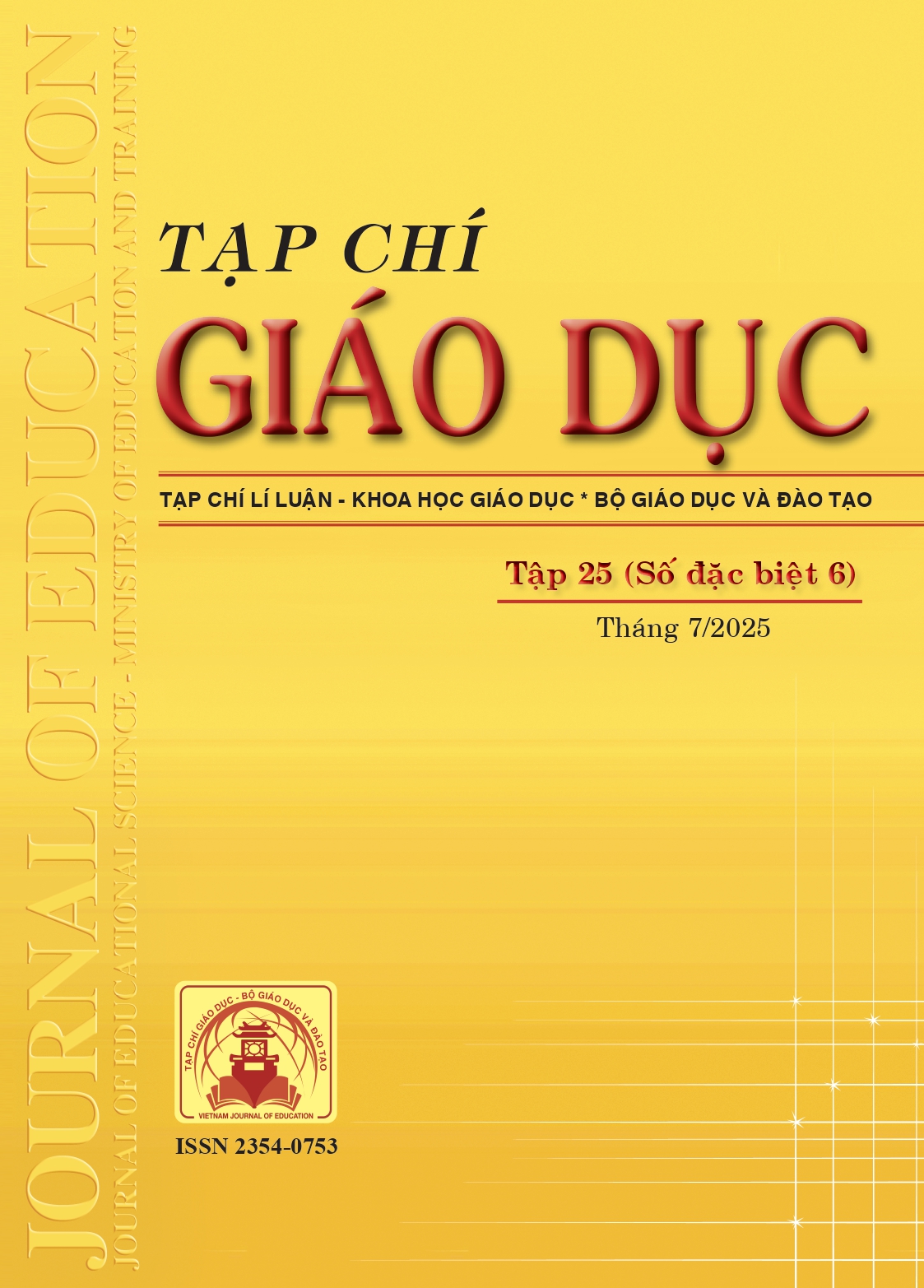Dạy học giải bài tập chủ đề “Ứng dụng hình học của tích phân” (Toán 12) theo tiếp cận kết nối Toán học
Tóm tắt
Mathematical connections are important in developing mathematical concepts and knowledge for students, improving problem-solving skills and enhancing the ability to apply mathematics in practice. The study proposes a teaching process for solving exercises on the content of “Geometric applications of integration” (Math 12) according to the mathematical connection approach and illustrates this process through solving carefully selected exercises, in which each exercise is analyzed according to different types of mathematical connections, including connections between mathematical topics, representations, and methods for solving exercises. Through this teaching process, students gain a deeper understanding of the application of integration by approaching from many angles, training their analytical and synthetic thinking skills and problem-solving abilities. Moreover, mathematical connections also expand students' knowledge, thereby increasing their interest in learning and motivation for self-study; contributing to improving the quality of mathematics education.
Tài liệu tham khảo
Boaler, J. (1998). Open and closed mathematics: Student experiences and understandings. Journal for Research in Mathematics Education, 29(01), 41-62. https://doi.org/10.2307/749717
Bộ GD-ĐT (2018). Chương trình giáo dục phổ thông môn Toán (ban hành kèm theo Thông tư số 32/2018/TTBGDĐT ngày 26/12/2018 của Bộ trưởng Bộ GD-ĐT).
Đỗ Đức Thái (Tổng Chủ biên kiêm Chủ biên), Phạm Xuân Chung, Nguyễn Sơn Hà, Nguyễn Thị Phương Loan, Phạm Sỹ Nam, Phạm Minh Phương (2023). Toán 12 (tập 2). NXB Đại học Sư phạm.
Gravemeijer, K., & Doorman, M. (1999). Context problems in realistic mathematics education: A calculus course as an example. Educational Studies in Mathematics, 39(1-3), 111-129. https://doi.org/10.1023/A:1003749919816
Harel, G., & Kaput, J. (2002). The role of conceptual entities and their symbols in building advanced mathematical concepts. In D. Tall (Ed.). Advanced mathematical thinking (pp. 82-94). Springer. https://doi.org/10.1007/0-306-47203-1_5
Hiebert, J., & Carpenter, T. P. (1992). Learning and teaching with understanding. In D. A. Grouws (Ed.), Handbook of research on mathematics teaching and learning (pp. 65-97). Macmillan.
Leikin, R., & Zazkis, R. (2010). Learning through teaching mathematics: Development of teachers’ knowledge and expertise. Springer.
National Council of Teachers of Mathematics (NCTM, 2000). Principles and standards for school mathematics.
National Research Council (2005). How students learn: Mathematics in the classroom. In M. S. Donovan & J. D. Bransford (Eds.). Committee on How People Learn: A Targeted Report for Teachers, Division of Behavioral and Social Sciences and Education. The National Academies Press. https://doi.org/10.17226/11101
Ndiung, S., & Nendi, F. (2018). The effect of mathematical connection ability on students’ mathematics learning achievement. Journal of Physics: Conference Series, 1028, 012186. https://doi.org/10.1051/shsconf/20184200009
Nguyễn Dương Hoàng, Phan Anh Tuấn (2024). Dạy học chủ đề ba đường conic Toán 10 theo định hướng kết nối toán học với thực tiễn. Tạp chí Khoa học, Trường Đại học Đồng Tháp, 13(01S), 54-64. https://doi.org/10.52714/dthu.13.01S.2024.1300
Nguyễn Thị Tân An, Lê Văn Vũ (2024). Kết nối toán học giữa đạo hàm và tích phân trong dạy học giải quyết các vấn đề thực tế. Tạp chí Giáo dục, 24(10), 12-17.
Polya (2020). Giải bài toán như thế nào? NXB Giáo dục Việt Nam.
Silver, E. A. (1995). The nature and use of connections in mathematical problem solving. In P. A. House & A. F. Coxford (Eds.). Connecting mathematics across the curriculum (pp. 183-193). National Council of Teachers of Mathematics.
Stillman, G., Brown, J., & Galbraith, P. (2010). Research on modelling in mathematics education: Some findings and directions. In R. Lesh et al. (Eds.). Modeling students’ mathematical modeling competencies (pp. 211-229). Springer.
Tall, D. (1993). Students' difficulties in calculus. In Proceedings of Working Group 3 on Students' Difficulties in Calculus, ICME-7 (pp. 13-28). Québec, Canada.
Đã Xuất bản
Cách trích dẫn
Số
Chuyên mục
Giấy phép

Tác phẩm này được cấp phép theo Ghi nhận tác giả của Creative Commons Giấy phép quốc tế 4.0 .












